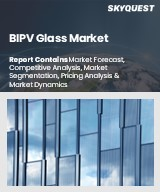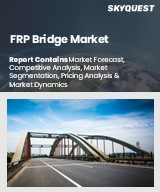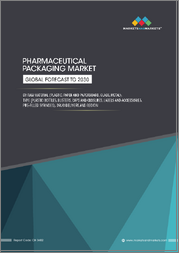
|
시장보고서
상품코드
1796897
착색 유리 시장 - 세계 산업 규모, 점유율, 동향, 기회, 예측, 부문별, 용도별, 유형별, 기술별, 최종 사용자별, 지역별 부문, 경쟁(2020-2030년)Tinted Glass Market - Global Industry Size, Share, Trends, Opportunity, and Forecast, Segmented, By Application, By Type, By Technology, By End-User, By Region, By Competition, 2020-2030F |
||||||
세계의 착색 유리 시장은 2024년에 103억 7,000만 달러로 평가되었으며, 2030년에는 CAGR 5.94%를 나타내 147억 9,000만 달러에 이를 것으로 예상됩니다.
착색 유리 시장이란 가시광선, 자외선(UV), 태양열의 투과를 제한하고 투명도를 저하시키는 재료나 코팅이 된 유리의 제조, 유통, 응용에 관련된 산업을 말합니다. 착색 유리는 기능적, 미적 이점으로부터 자동차, 건축, 아키텍처, 인테리어 디자인 등 다양한 분야에서 널리 사용됩니다. 건축업계에서는 주거용, 상업용 빌딩, 산업용 빌딩에서 사용되며 에너지 효율을 높이고 눈부심을 최소화하며 거주자의 편안함을 향상시키고 현대적인 건축 디자인에 기여합니다. 자동차 분야에서는 착색 유리가 차량 창문에 채택되어 승객의 프라이버시를 향상시키고, 일사열의 상승을 억제하고, 자외선에 의한 피해로부터 내장을 보호합니다.
| 시장 개요 | |
|---|---|
| 예측 기간 | 2026-2030년 |
| 시장 규모 : 2024년 | 103억 7,000만 달러 |
| 시장 규모 : 2030년 | 147억 9,000만 달러 |
| CAGR : 2025-2030년 | 5.94% |
| 급성장 부문 | 건축 |
| 최대 시장 | 북미 |
착색 유리 수요는 가구 및 전자 분야에서도 성장하고 있으며, 캐비닛 도어, 스마트 스크린, 디스플레이 패널 등에 사용되고 있습니다. 도시화의 진전, 환경 의식의 고조, 지속 가능한 건축 재료에의 기호의 고조가, 착색 유리의 채용을 세계적으로 추진하고 있습니다. 유리 제조 및 코팅 공정의 기술 발전으로 내구성, 색 안정성 및 에너지 절약 특성이 향상된 고성능 착색 유리 제품이 개발되었습니다. 또한 착색 유리와 스위터블 유리, 일렉트로크로믹 유리 등의 스마트 기술과의 융합으로 프리미엄 인프라와 고급차에의 적용 범위가 확대되고 있습니다. 에너지 효율적인 건축 기준과 자동차 안전 기준을 추진하는 정부 규정은 착색 유리의 사용을 더욱 촉진하고 있습니다. 또한, 미관, 프라이버시, 쾌적성 향상에 대한 소비자의 선호도는 선진국 시장과 신흥국 시장 모두에서 수요를 촉진하고 있습니다.
주요 시장 성장 촉진요인
건축물 및 자동차의 에너지 효율에 대한 수요 증가
주요 시장 과제
생산·설치 비용의 높이
주요 시장 동향
착색 유리 혁신의 원동력이 되는 자동차 부문 수요 증가
목차
제1장 개요
제2장 조사 방법
제3장 주요 요약
제4장 고객의 목소리
제5장 세계의 착색 유리 시장 전망
- 시장 규모와 예측
- 금액별
- 시장 점유율·예측
- 용도별(자동차, 건축, 항공우주, 가구, 태양열)
- 유형별(반사형, 흡수형, 이중 목적, 세라믹, 장식용)
- 기술별(적층, 강화, 코팅, 절연, 스마트 유리)
- 최종 사용자별(주택, 상업, 산업)
- 지역별
- 기업별(2024년)
- 시장 맵
제6장 북미의 착색 유리 시장 전망
- 시장 규모와 예측
- 시장 점유율·예측
- 북미 : 국가별 분석
- 미국
- 캐나다
- 멕시코
제7장 유럽의 착색 유리 시장 전망
- 시장 규모와 예측
- 시장 점유율·예측
- 유럽 : 국가별 분석
- 독일
- 영국
- 이탈리아
- 프랑스
- 스페인
제8장 아시아태평양의 착색 유리 시장 전망
- 시장 규모와 예측
- 시장 점유율·예측
- 아시아태평양 : 국가별 분석
- 중국
- 인도
- 일본
- 한국
- 호주
제9장 남미의 착색 유리 시장 전망
- 시장 규모와 예측
- 시장 점유율·예측
- 남미 : 국가별 분석
- 브라질
- 아르헨티나
- 콜롬비아
제10장 중동 및 아프리카의 착색 유리 시장 전망
- 시장 규모와 예측
- 시장 점유율·예측
- 중동 및 아프리카 : 국가별 분석
- 남아프리카
- 사우디아라비아
- 아랍에미리트(UAE)
- 쿠웨이트
- 튀르키예
제11장 시장 역학
- 성장 촉진요인
- 과제
제12장 시장 동향과 발전
- 합병과 인수
- 제품 출시
- 최근 동향
제13장 기업 프로파일
- Saint-Gobain SA
- AGC Inc.(Asahi Glass Co., Ltd.)
- NSG Group (Nippon Sheet Glass Co., Ltd.)
- Guardian Industries Holdings, LLC
- PPG Industries, Inc.
- Cardinal Glass Industries, Inc.
- Xinyi Glass Holdings Limited
- Sisecam Group
- Taiwan Glass Ind. Corp.
- Fuyao Glass Industry Group Co., Ltd.
제14장 전략적 제안
제15장 기업 소개와 면책사항
KTH 25.08.29The Tinted Glass Market was valued at USD 10.37 Billion in 2024 and is expected to reach USD 14.79 Billion by 2030 with a CAGR of 5.94%. The tinted glass market refers to the industry involved in the manufacturing, distribution, and application of glass that has been treated with materials or coatings to reduce transparency and limit the transmission of visible light, ultraviolet (UV) rays, and solar heat. Tinted glass is widely used across various sectors, including automotive, construction, architecture, and interior design, due to its functional and aesthetic benefits. In the construction industry, it is utilized in residential, commercial, and industrial buildings to enhance energy efficiency, minimize glare, increase occupant comfort, and contribute to modern architectural designs. In the automotive sector, tinted glass is employed in vehicle windows to improve passenger privacy, reduce solar heat gain, and protect interiors from UV damage.
| Market Overview | |
|---|---|
| Forecast Period | 2026-2030 |
| Market Size 2024 | USD 10.37 Billion |
| Market Size 2030 | USD 14.79 Billion |
| CAGR 2025-2030 | 5.94% |
| Fastest Growing Segment | Architectural |
| Largest Market | North America |
The demand for tinted glass is also growing in the furniture and electronics sectors, where it is used in cabinet doors, smart screens, and display panels. Increasing urbanization, rising environmental awareness, and the growing preference for sustainable building materials are driving the adoption of tinted glass globally. Technological advancements in glass manufacturing and coating processes have led to the development of high-performance tinted glass products with improved durability, color stability, and energy-saving properties. Moreover, the integration of tinted glass with smart technologies, such as switchable or electrochromic glass, is expanding its application scope in premium infrastructure and luxury vehicles. Government regulations promoting energy-efficient building codes and vehicle safety standards are further encouraging the use of tinted glass. Additionally, consumer preference for enhanced aesthetics, privacy, and comfort is propelling demand in both developed and emerging markets.
Key Market Drivers
Rising Demand for Energy Efficiency in Buildings and Vehicles
The demand for energy-efficient solutions is a key driver propelling the growth of the tinted glass market, as both commercial and residential sectors seek to minimize energy consumption and carbon footprints. Tinted glass plays a critical role in enhancing energy efficiency by reducing the amount of solar heat entering interiors, thereby decreasing the load on air conditioning systems and overall energy expenditure. This is particularly important in regions with hot climates, where buildings and vehicles experience high solar exposure. Governments across various countries are also implementing green building codes and energy efficiency standards that promote the use of materials like tinted glass, which can significantly improve thermal insulation and reduce HVAC energy requirements.
In the automotive industry, the push towards fuel economy and electric vehicle range optimization has led to the incorporation of tinted glass, as it helps maintain interior temperatures and reduces the reliance on air conditioning systems. Additionally, commercial complexes, shopping malls, and office spaces are adopting high-performance tinted glass to not only manage energy costs but also enhance occupant comfort and reduce glare. The corporate sector, being increasingly aware of sustainability goals, is investing in smart and sustainable infrastructure, further amplifying demand. Tinted glass also aids in achieving building certification standards such as LEED, which has become a selling point for real estate developers.
Key Market Challenges
High Cost of Production and Installation
One of the most significant challenges facing the tinted glass market is the high cost associated with both production and installation, which can limit its adoption, particularly in cost-sensitive markets and developing economies. Tinted glass, especially when manufactured with advanced coatings or embedded technologies like UV protection, infrared resistance, or smart functionalities, requires specialized raw materials, complex manufacturing processes, and high-end machinery. These factors collectively drive up production expenses. For example, the use of high-quality additives and tints to achieve desired optical properties adds to the cost of raw materials. Additionally, maintaining uniformity and clarity during mass production demands stringent quality control, increasing operational expenditures.
These high production costs are then passed on to the end consumer, making tinted glass a premium product, often unaffordable for low- to mid-income residential users or small-scale commercial projects. Furthermore, the installation of tinted glass requires skilled labor and precision, particularly in architectural applications where structural safety and visual aesthetics must be ensured. Improper handling or fitting may lead to breakage or performance degradation, thus necessitating trained professionals, which adds to the cost of implementation. For automotive applications, the challenge is equally pressing. Regulatory compliance with visibility standards and legal restrictions on tint levels in different regions often requires the use of specific, certified tinting films or factory-installed tinted glass, which are costlier than aftermarket alternatives.
This cost sensitivity reduces the market's scalability and adoption rate, especially in price-competitive sectors. Additionally, frequent technological innovations aimed at improving energy efficiency or aesthetics can quickly render existing products obsolete, requiring businesses to constantly upgrade production lines or inventory. This creates a financial burden for manufacturers and discourages smaller players from entering or expanding within the market. Overall, the inability to reduce costs without compromising on quality and performance remains a persistent barrier that slows down mass adoption, restricts accessibility across diverse customer segments, and hampers the market's full growth potential, especially in regions with limited disposable income or high price sensitivity.
Key Market Trends
Rising Demand from the Automotive Sector Driving Tinted Glass Innovation
The tinted glass market is witnessing substantial momentum driven by the growing demand from the automotive industry, which is increasingly prioritizing safety, comfort, and aesthetics. As vehicle manufacturers seek to deliver advanced features that enhance passenger experience and meet stringent safety regulations, tinted glass has emerged as a preferred solution due to its ability to block harmful UV rays, reduce glare, and maintain cabin temperature. The integration of tinted glass in both passenger and commercial vehicles helps improve fuel efficiency by reducing air-conditioning usage, which is becoming a crucial consideration in the era of rising environmental awareness. Additionally, consumers are increasingly favoring vehicles that offer a blend of performance and luxury, and tinted windows contribute significantly to the visual appeal and premium feel of automobiles.
This trend is being further fueled by growing urbanization and increasing disposable income, especially in emerging markets where car ownership is rising steadily. The use of tinted glass is no longer limited to high-end models, as automakers are incorporating it into mid-range and even entry-level vehicles to stay competitive. Furthermore, advancements in smart glass technology have opened new avenues, enabling the development of electronically tint-adjustable windows, which allow drivers and passengers to control the level of shading in real-time. This not only enhances passenger comfort but also aligns with the broader trend of automotive digitization and connectivity. Manufacturers are investing in R&D to create durable, high-performance tinted glass that offers better thermal insulation, impact resistance, and lightweight properties, aligning with the industry's shift toward electric vehicles.
Tinted glass is also being increasingly used in sunroofs and panoramic roofs, a feature gaining popularity among consumers seeking a more open and luxurious in-car experience. Additionally, regulatory bodies in several countries are revising standards regarding window tinting, promoting the use of certified and safety-tested tinted glass that balances visibility with UV and infrared protection. As these regulations evolve, manufacturers have the opportunity to innovate and deliver compliant yet stylish solutions. The aftermarket for automotive tinted glass is also expanding, with vehicle owners opting for high-quality tints for privacy, protection, and customization. This growing preference is encouraging glass manufacturers to collaborate with automakers and dealers to offer factory-fitted options and bundled packages. Collectively, these developments highlight a sustained trend where the automotive industry continues to play a central role in shaping the growth trajectory of the tinted glass market, supported by innovation, consumer preferences, and environmental considerations.
Key Market Players
- Saint-Gobain S.A.
- AGC Inc. (Asahi Glass Co., Ltd.)
- NSG Group (Nippon Sheet Glass Co., Ltd.)
- Guardian Industries Holdings, LLC
- PPG Industries, Inc.
- Cardinal Glass Industries, Inc.
- Xinyi Glass Holdings Limited
- Sisecam Group
- Taiwan Glass Ind. Corp.
- Fuyao Glass Industry Group Co., Ltd.
Report Scope:
In this report, the Global Tinted Glass Market has been segmented into the following categories, in addition to the industry trends which have also been detailed below:
Tinted Glass Market, By Application:
- Automotive
- Architectural
- Aerospace
- Furniture
- Solar Thermal
Tinted Glass Market, By Type:
- Reflective
- Absorptive
- Dual-Purpose
- Ceramic
- Decorative
Tinted Glass Market, By Technology:
- Laminated
- Tempered
- Coated
- Insulated
- Smart Glass
Tinted Glass Market, By End-User:
- Residential
- Commercial
- Industrial
Tinted Glass Market, By Region:
- North America
- United States
- Canada
- Mexico
- Europe
- France
- United Kingdom
- Italy
- Germany
- Spain
- Asia-Pacific
- China
- India
- Japan
- Australia
- South Korea
- South America
- Brazil
- Argentina
- Colombia
- Middle East & Africa
- South Africa
- Saudi Arabia
- UAE
- Kuwait
- Turkey
Competitive Landscape
Company Profiles: Detailed analysis of the major companies presents in the Global Tinted Glass Market.
Available Customizations:
Global Tinted Glass Market report with the given Market data, Tech Sci Research offers customizations according to a company's specific needs. The following customization options are available for the report:
Company Information
- Detailed analysis and profiling of additional Market players (up to five).
Table of Contents
1. Product Overview
- 1.1. Market Definition
- 1.2. Scope of the Market
- 1.2.1. Markets Covered
- 1.2.2. Years Considered for Study
- 1.3. Key Market Segmentations
2. Research Methodology
- 2.1. Objective of the Study
- 2.2. Baseline Methodology
- 2.3. Formulation of the Scope
- 2.4. Assumptions and Limitations
- 2.5. Sources of Research
- 2.5.1. Secondary Research
- 2.5.2. Primary Research
- 2.6. Approach for the Market Study
- 2.6.1. The Bottom-Up Approach
- 2.6.2. The Top-Down Approach
- 2.7. Methodology Followed for Calculation of Market Size & Market Shares
- 2.8. Forecasting Methodology
- 2.8.1. Data Triangulation & Validation
3. Executive Summary
- 3.1. Overview of the Market
- 3.2. Overview of Key Market Segmentations
- 3.3. Overview of Key Market Players
- 3.4. Overview of Key Regions/Countries
- 3.5. Overview of Market Drivers, Challenges, and Trends
4. Voice of Customer
5. Global Tinted Glass Market Outlook
- 5.1. Market Size & Forecast
- 5.1.1. By Value
- 5.2. Market Share & Forecast
- 5.2.1. By Application (Automotive, Architectural, Aerospace, Furniture, Solar Thermal)
- 5.2.2. By Type (Reflective, Absorptive, Dual-Purpose, Ceramic, Decorative)
- 5.2.3. By Technology (Laminated, Tempered, Coated, Insulated, Smart Glass)
- 5.2.4. By End-User (Residential, Commercial, Industrial)
- 5.2.5. By Region
- 5.3. By Company (2024)
- 5.4. Market Map
6. North America Tinted Glass Market Outlook
- 6.1. Market Size & Forecast
- 6.1.1. By Value
- 6.2. Market Share & Forecast
- 6.2.1. By Application
- 6.2.2. By Type
- 6.2.3. By Technology
- 6.2.4. By End-User
- 6.2.5. By Country
- 6.3. North America: Country Analysis
- 6.3.1. United States Tinted Glass Market Outlook
- 6.3.1.1. Market Size & Forecast
- 6.3.1.1.1. By Value
- 6.3.1.2. Market Share & Forecast
- 6.3.1.2.1. By Application
- 6.3.1.2.2. By Type
- 6.3.1.2.3. By Technology
- 6.3.1.2.4. By End-User
- 6.3.1.1. Market Size & Forecast
- 6.3.2. Canada Tinted Glass Market Outlook
- 6.3.2.1. Market Size & Forecast
- 6.3.2.1.1. By Value
- 6.3.2.2. Market Share & Forecast
- 6.3.2.2.1. By Application
- 6.3.2.2.2. By Type
- 6.3.2.2.3. By Technology
- 6.3.2.2.4. By End-User
- 6.3.2.1. Market Size & Forecast
- 6.3.3. Mexico Tinted Glass Market Outlook
- 6.3.3.1. Market Size & Forecast
- 6.3.3.1.1. By Value
- 6.3.3.2. Market Share & Forecast
- 6.3.3.2.1. By Application
- 6.3.3.2.2. By Type
- 6.3.3.2.3. By Technology
- 6.3.3.2.4. By End-User
- 6.3.3.1. Market Size & Forecast
- 6.3.1. United States Tinted Glass Market Outlook
7. Europe Tinted Glass Market Outlook
- 7.1. Market Size & Forecast
- 7.1.1. By Value
- 7.2. Market Share & Forecast
- 7.2.1. By Application
- 7.2.2. By Type
- 7.2.3. By Technology
- 7.2.4. By End-User
- 7.2.5. By Country
- 7.3. Europe: Country Analysis
- 7.3.1. Germany Tinted Glass Market Outlook
- 7.3.1.1. Market Size & Forecast
- 7.3.1.1.1. By Value
- 7.3.1.2. Market Share & Forecast
- 7.3.1.2.1. By Application
- 7.3.1.2.2. By Type
- 7.3.1.2.3. By Technology
- 7.3.1.2.4. By End-User
- 7.3.1.1. Market Size & Forecast
- 7.3.2. United Kingdom Tinted Glass Market Outlook
- 7.3.2.1. Market Size & Forecast
- 7.3.2.1.1. By Value
- 7.3.2.2. Market Share & Forecast
- 7.3.2.2.1. By Application
- 7.3.2.2.2. By Type
- 7.3.2.2.3. By Technology
- 7.3.2.2.4. By End-User
- 7.3.2.1. Market Size & Forecast
- 7.3.3. Italy Tinted Glass Market Outlook
- 7.3.3.1. Market Size & Forecast
- 7.3.3.1.1. By Value
- 7.3.3.2. Market Share & Forecast
- 7.3.3.2.1. By Application
- 7.3.3.2.2. By Type
- 7.3.3.2.3. By Technology
- 7.3.3.2.4. By End-User
- 7.3.3.1. Market Size & Forecast
- 7.3.4. France Tinted Glass Market Outlook
- 7.3.4.1. Market Size & Forecast
- 7.3.4.1.1. By Value
- 7.3.4.2. Market Share & Forecast
- 7.3.4.2.1. By Application
- 7.3.4.2.2. By Type
- 7.3.4.2.3. By Technology
- 7.3.4.2.4. By End-User
- 7.3.4.1. Market Size & Forecast
- 7.3.5. Spain Tinted Glass Market Outlook
- 7.3.5.1. Market Size & Forecast
- 7.3.5.1.1. By Value
- 7.3.5.2. Market Share & Forecast
- 7.3.5.2.1. By Application
- 7.3.5.2.2. By Type
- 7.3.5.2.3. By Technology
- 7.3.5.2.4. By End-User
- 7.3.5.1. Market Size & Forecast
- 7.3.1. Germany Tinted Glass Market Outlook
8. Asia-Pacific Tinted Glass Market Outlook
- 8.1. Market Size & Forecast
- 8.1.1. By Value
- 8.2. Market Share & Forecast
- 8.2.1. By Application
- 8.2.2. By Type
- 8.2.3. By Technology
- 8.2.4. By End-User
- 8.2.5. By Country
- 8.3. Asia-Pacific: Country Analysis
- 8.3.1. China Tinted Glass Market Outlook
- 8.3.1.1. Market Size & Forecast
- 8.3.1.1.1. By Value
- 8.3.1.2. Market Share & Forecast
- 8.3.1.2.1. By Application
- 8.3.1.2.2. By Type
- 8.3.1.2.3. By Technology
- 8.3.1.2.4. By End-User
- 8.3.1.1. Market Size & Forecast
- 8.3.2. India Tinted Glass Market Outlook
- 8.3.2.1. Market Size & Forecast
- 8.3.2.1.1. By Value
- 8.3.2.2. Market Share & Forecast
- 8.3.2.2.1. By Application
- 8.3.2.2.2. By Type
- 8.3.2.2.3. By Technology
- 8.3.2.2.4. By End-User
- 8.3.2.1. Market Size & Forecast
- 8.3.3. Japan Tinted Glass Market Outlook
- 8.3.3.1. Market Size & Forecast
- 8.3.3.1.1. By Value
- 8.3.3.2. Market Share & Forecast
- 8.3.3.2.1. By Application
- 8.3.3.2.2. By Type
- 8.3.3.2.3. By Technology
- 8.3.3.2.4. By End-User
- 8.3.3.1. Market Size & Forecast
- 8.3.4. South Korea Tinted Glass Market Outlook
- 8.3.4.1. Market Size & Forecast
- 8.3.4.1.1. By Value
- 8.3.4.2. Market Share & Forecast
- 8.3.4.2.1. By Application
- 8.3.4.2.2. By Type
- 8.3.4.2.3. By Technology
- 8.3.4.2.4. By End-User
- 8.3.4.1. Market Size & Forecast
- 8.3.5. Australia Tinted Glass Market Outlook
- 8.3.5.1. Market Size & Forecast
- 8.3.5.1.1. By Value
- 8.3.5.2. Market Share & Forecast
- 8.3.5.2.1. By Application
- 8.3.5.2.2. By Type
- 8.3.5.2.3. By Technology
- 8.3.5.2.4. By End-User
- 8.3.5.1. Market Size & Forecast
- 8.3.1. China Tinted Glass Market Outlook
9. South America Tinted Glass Market Outlook
- 9.1. Market Size & Forecast
- 9.1.1. By Value
- 9.2. Market Share & Forecast
- 9.2.1. By Application
- 9.2.2. By Type
- 9.2.3. By Technology
- 9.2.4. By End-User
- 9.2.5. By Country
- 9.3. South America: Country Analysis
- 9.3.1. Brazil Tinted Glass Market Outlook
- 9.3.1.1. Market Size & Forecast
- 9.3.1.1.1. By Value
- 9.3.1.2. Market Share & Forecast
- 9.3.1.2.1. By Application
- 9.3.1.2.2. By Type
- 9.3.1.2.3. By Technology
- 9.3.1.2.4. By End-User
- 9.3.1.1. Market Size & Forecast
- 9.3.2. Argentina Tinted Glass Market Outlook
- 9.3.2.1. Market Size & Forecast
- 9.3.2.1.1. By Value
- 9.3.2.2. Market Share & Forecast
- 9.3.2.2.1. By Application
- 9.3.2.2.2. By Type
- 9.3.2.2.3. By Technology
- 9.3.2.2.4. By End-User
- 9.3.2.1. Market Size & Forecast
- 9.3.3. Colombia Tinted Glass Market Outlook
- 9.3.3.1. Market Size & Forecast
- 9.3.3.1.1. By Value
- 9.3.3.2. Market Share & Forecast
- 9.3.3.2.1. By Application
- 9.3.3.2.2. By Type
- 9.3.3.2.3. By Technology
- 9.3.3.2.4. By End-User
- 9.3.3.1. Market Size & Forecast
- 9.3.1. Brazil Tinted Glass Market Outlook
10. Middle East and Africa Tinted Glass Market Outlook
- 10.1. Market Size & Forecast
- 10.1.1. By Value
- 10.2. Market Share & Forecast
- 10.2.1. By Application
- 10.2.2. By Type
- 10.2.3. By Technology
- 10.2.4. By End-User
- 10.2.5. By Country
- 10.3. Middle East and Africa: Country Analysis
- 10.3.1. South Africa Tinted Glass Market Outlook
- 10.3.1.1. Market Size & Forecast
- 10.3.1.1.1. By Value
- 10.3.1.2. Market Share & Forecast
- 10.3.1.2.1. By Application
- 10.3.1.2.2. By Type
- 10.3.1.2.3. By Technology
- 10.3.1.2.4. By End-User
- 10.3.1.1. Market Size & Forecast
- 10.3.2. Saudi Arabia Tinted Glass Market Outlook
- 10.3.2.1. Market Size & Forecast
- 10.3.2.1.1. By Value
- 10.3.2.2. Market Share & Forecast
- 10.3.2.2.1. By Application
- 10.3.2.2.2. By Type
- 10.3.2.2.3. By Technology
- 10.3.2.2.4. By End-User
- 10.3.2.1. Market Size & Forecast
- 10.3.3. UAE Tinted Glass Market Outlook
- 10.3.3.1. Market Size & Forecast
- 10.3.3.1.1. By Value
- 10.3.3.2. Market Share & Forecast
- 10.3.3.2.1. By Application
- 10.3.3.2.2. By Type
- 10.3.3.2.3. By Technology
- 10.3.3.2.4. By End-User
- 10.3.3.1. Market Size & Forecast
- 10.3.4. Kuwait Tinted Glass Market Outlook
- 10.3.4.1. Market Size & Forecast
- 10.3.4.1.1. By Value
- 10.3.4.2. Market Share & Forecast
- 10.3.4.2.1. By Application
- 10.3.4.2.2. By Type
- 10.3.4.2.3. By Technology
- 10.3.4.2.4. By End-User
- 10.3.4.1. Market Size & Forecast
- 10.3.5. Turkey Tinted Glass Market Outlook
- 10.3.5.1. Market Size & Forecast
- 10.3.5.1.1. By Value
- 10.3.5.2. Market Share & Forecast
- 10.3.5.2.1. By Application
- 10.3.5.2.2. By Type
- 10.3.5.2.3. By Technology
- 10.3.5.2.4. By End-User
- 10.3.5.1. Market Size & Forecast
- 10.3.1. South Africa Tinted Glass Market Outlook
11. Market Dynamics
- 11.1. Drivers
- 11.2. Challenges
12. Market Trends & Developments
- 12.1. Merger & Acquisition (If Any)
- 12.2. Product Launches (If Any)
- 12.3. Recent Developments
13. Company Profiles
- 13.1. Saint-Gobain S.A.
- 13.1.1. Business Overview
- 13.1.2. Key Revenue and Financials
- 13.1.3. Recent Developments
- 13.1.4. Key Personnel/Key Contact Person
- 13.1.5. Key Product/Services Offered
- 13.2. AGC Inc. (Asahi Glass Co., Ltd.)
- 13.3. NSG Group (Nippon Sheet Glass Co., Ltd.)
- 13.4. Guardian Industries Holdings, LLC
- 13.5. PPG Industries, Inc.
- 13.6. Cardinal Glass Industries, Inc.
- 13.7. Xinyi Glass Holdings Limited
- 13.8. Sisecam Group
- 13.9. Taiwan Glass Ind. Corp.
- 13.10. Fuyao Glass Industry Group Co., Ltd.
14. Strategic Recommendations
15. About Us & Disclaimer
(주말 및 공휴일 제외)


















